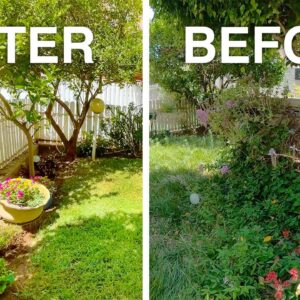With the increasing demand for locally-grown produce, many aspiring gardeners are eager to join a local garden club. Yet, there is much more to gardening than simply planting seeds. From selecting the right type of seed to harvesting the produce, the journey of a local garden club member is both complex and rewarding.
This article provides an overview of this journey, including key steps such as preparing the soil, monitoring growth and harvesting the produce. Through understanding these steps, readers will gain insight into how their own gardening endeavors can benefit from participation in a local garden club.
Garden club notes
- Joining a local garden club offers a complex and rewarding gardening journey.
- Selecting the right seeds, considering factors like climate, temperature, sunlight, soil pH, fertility, texture, drainage, and nutrient availability, is crucial for successful gardening.
- Preparing the soil through adding soil amendments, testing soil pH, using fertilizers, and improving drainage and water retention with compost is essential.
- Monitoring growth, keeping accurate records, and harvesting produce properly are important steps to optimize yields and enjoy preserved harvests throughout the year.
Choosing the right seeds
Selecting the ideal variety of seeds is an essential step in ensuring a successful harvest. It is important for garden club members to research the best type of seed for their particular growing environment and soil quality. Factors such as climate, temperature, and amount of sunlight should all be taken into consideration when making this choice.
Additionally, one must consider soil pH levels, fertility, texture, drainage capacity, and nutrient availability before selecting a suitable seed. If the wrong variety is chosen it can lead to poor germination rates or even crop failure if conditions are not optimal.
When choosing a seed it is also important to check its origin and quality. Many commercial seeds have been bred for improved traits such as disease resistance or higher yields; however some of these varieties may not thrive in certain climates or soils. Gardeners should always read labels carefully and purchase from reputable sources that guarantee freshness and viability. Properly storing seeds will further ensure they retain their vitality until planting season arrives.
For gardeners that wish to save money by harvesting their own seeds from previous harvests, this practice can be rewarding but requires more careful planning since not all types will produce viable offspring or remain true-to-type if cross pollinated with other varieties nearby. With proper seed selection and storage techniques, local garden club members can set themselves up for success come harvest time. The next step then becomes preparing the soil for optimum growth potential.

Preparing the soil
Preparing the soil is an important step for successful gardening.
Adding soil amendments helps to improve the texture and nutrients of the soil, while testing the pH level can help to determine whether or not the garden site is suitable for certain plants.
Understanding these processes will help local garden club members ensure their gardens are ready for planting seeds.
Adding soil amendments
Incorporating soil amendments is essential for successful gardening. Different fertilizer types can be used to improve soil composition, such as organic or synthetic varieties.
Organic fertilizers are natural and usually derived from plants and animals. They break down slowly, releasing essential nutrients into the soil over time.
Synthetic fertilizers contain concentrated amounts of chemical-based nutrients that are released quickly when applied to the soil.
Both types of fertilizer should be incorporated before planting, either by tilling them directly in the garden bed or spreading them on top of the soil surface and then worked in with a rake or hoe.
Additionally, adding compost can help improve drainage and water retention in heavy soils while amending sandy soils with organic matter will increase water holding capabilities and nutrient availability.
Ultimately, using an appropriate combination of amendments will ensure optimal fertility for a bountiful harvest.
The next step is to test the pH level of the soil to measure acidity levels which can affect plant growth.
Testing the pH level
Testing the soil’s pH level is essential to determine its suitability for plant growth. The optimal range of soil pH varies between plants, so it is important to research the specific needs of each type of plant before testing the soil.
Garden club members can use a variety of methods to test soil acidity and alkalinity levels, such as litmus paper or commercially available pH test kits. Additionally, gardeners should consider incorporating certain strategies into their gardening practice which will help maintain an optimal pH balance over time, such as adding lime or sulfur-based fertilizer, using compost or manure, or growing cover crops.
Testing the pH level provides valuable insight into how suitable the soil is for planting; understanding this information allows gardeners to best prepare their land for successful planting and harvesting. With an informed approach and appropriate means of testing and adjusting accordingly, gardeners can ensure that their soil has ideal conditions for optimum growth throughout the entire cycle—from seed to harvest.
Planting the seeds
Planting seeds requires an understanding of planting times and depths, as well as the creation of a planting schedule.
This is important because it helps to ensure that the desired plants are able to achieve optimal growth conditions.
Furthermore, knowing when and how to plant can help gardeners maximize their harvest yields.
Understanding planting times and depths
Accurately determining planting times and depths is a critical component of successful gardening. Seed selection, soil nutrients, and understanding the local environment all play an important role in this process.
- Seed Selection: Knowing which plants will thrive in one’s local climate is key to successful planting. Researching seed varieties that are suited for the specific environment can help ensure optimal growth and harvest.
- Soil Nutrients: Understanding the type of soil available and what nutrients will be needed to nourish the plants is also essential. Adding mulch or compost can help enrich the soil and promote healthy plant growth during each season.
- Local Environment: Being aware of any potential environmental threats such as extreme temperatures or pests can also aid in successful gardening practices. Taking preventative measures against possible issues before they occur helps protect both crops and gardeners alike.
By taking into account these factors, gardeners can confidently plan their planting schedule with greater efficiency and accuracy, ensuring a bountiful harvest come harvest time.
Creating a planting schedule
Creating an effective planting schedule is a crucial step for successful gardening. To do this, a gardener must consider factors such as the type of plants being planted, the time of year they should be sowed, and the necessary soil depth. | Plant | Time to Sow | Soil Depth ————-|——–|————-|———– Tomatoes | Spring | 1-2 inches | Carrots | Spring/Fall | 1 inch Beans | Summer/Fall| 2 inches Lettuce| Winter/Spring| 0.5 inch Composting and introducing beneficial insects into the garden can also contribute to stronger plant growth when creating a planting schedule. With careful consideration of these factors, gardeners can create a plan that will lead to optimal growth throughout their gardening journey from seed to harvest.
Watering and weeding
Adequate watering and proper weeding are essential components for successful gardening. In order to keep plants healthy, gardeners must pay close attention to how much they water their plants. This includes considering factors such as soil type, temperature, humidity, amount of sunlight, and wind exposure.
Additionally, weeds can quickly overtake a garden if not properly controlled. To do so effectively requires both manual removal or using mulching techniques that block sunlight from reaching the weed’s roots and prevent them from growing in the first place.
Gardeners may also have to deal with pests that can damage their crops by consuming foliage or transmitting plant diseases. To ensure a successful harvest, gardeners should regularly inspect their gardens for signs of disease or pest infestation and take swift action against any potential threats.
In addition to these steps, it is important that gardeners remain vigilant about weeding on an ongoing basis as even small weeds can grow quickly under the right conditions. Finally, having an understanding of when and how much water plants need helps promote healthy growth which leads to better yields at harvest time.
With careful attention and diligent effort throughout the growing season, local garden club members can successfully manage their plots from seed to harvest.
Monitoring the growth
Monitoring the growth of crops throughout the season is essential for optimizing yields. Gardeners must track progress by closely following their plants from germination to harvest. This includes assessing the health of plants, monitoring pests, and watching for signs of disease. To keep a record of this information, gardeners often create tables with columns for date, growth stage, pest activity, and notes on plant health.
| Date | Growth Stage | Pest Activity | Notes on Plant Health |
|---|---|---|---|
| 5/2 | Germinating | None | Wilting |
| 5/8 | 2 leaves | Aphids | Brown spots |
| 5/14 | 4 leaves | Ants | Yellowing |
| 5/20 | Flowering | None Healthy |
Through consistent monitoring gardeners can gain insight into how their plants are progressing and make changes to optimize yield or address potential issues before they arise. Keeping accurate records also helps gardeners learn from their successes and failures so that next year’s crop will be even better than this year’s! By understanding how to monitor plant growth effectively, local garden club members can become more successful in their endeavors. Harvesting the produce is the final step in the cycle as a gardener reaps what they have sown during the growing season.

Harvesting the produce
Reaping the benefits of a season’s hard work, harvesting the produce marks the end of a compelling saga for any gardener.
Harvesting techniques vary from one garden to another, depending on what type of plants are being grown, and how large or mature they have become. For example, larger vegetables like squash and pumpkins can be cut off with pruning shears or even picked up by hand. Smaller vegetables such as tomatoes and peppers should be handled more delicately; it is often best to pinch them off with two fingers instead of using tools that may damage the plant or fruit.
In addition to knowing how to properly harvest their produce, gardeners must also know how best to store it. Fruits and vegetables can spoil quickly when not stored correctly; therefore, it is important to choose storage containers that will help protect them from air exposure and dehydration. Depending on what is being stored, many gardeners opt for plastic bags or cardboard boxes lined with newspaper as well as shelves placed in cool areas such as cellars or basements.
The journey of a local gardener does not end when the produce has been harvested—it continues until all the fruits and vegetables have been enjoyed!
As part of this process, some gardeners choose to preserve their harvests by pickling cucumbers, drying herbs, freezing berries or making jams out of fruits like strawberries and peaches. This way they can savor the delicious bounty from their gardens throughout winter months ahead!
Frequently Asked Questions
What tools and materials are needed for gardening?
Gardening requires various tools and materials, such as trowels, shears, wheelbarrows, and watering cans. Other essentials include composting basics like organic matter and soil preparation like fertilizer. Mulch is also important for maintaining moisture and controlling weed growth.
What is the best way to store harvested produce?
Preserving techniques such as canning, freezing, and drying can help to maintain the quality of harvested produce. Additionally, proper storage options including cool, dry locations or well-ventilated containers can help prolong its shelf life.
How can a novice gardener get started?
The novice gardener can begin their journey by researching planting techniques and soil preparation. Through careful attention to detail and best practices, they can set themselves up for a rewarding harvest. Irony aside, there is much to learn – but with dedication and enthusiasm, great success awaits!
What are the most common pests and diseases that affect gardens?
Gardens can be affected by a range of pests and diseases. Poor planting techniques or soil preparation may lead to increased susceptibility. Commonly seen issues include fungal infections, infestations of insects such as aphids, slugs, and caterpillars, as well as viruses and bacteria.
Are there any tips for conserving water while gardening?
Irony aside, conserving water is a key factor in successful gardening. Water harvesting and drip irrigation are two of the most effective techniques for reducing water waste. Additionally, mulching with organic materials can help retain soil moisture and further reduce the amount of water needed.
Conclusion
The garden club member’s hard work has paid off – they now have a bountiful harvest!
From selecting the right seeds, to preparing and maintaining the soil, to nurturing the plants throughout their growth, it has been an arduous journey.
But with dedication and perseverance, success was achieved in the end – like a phoenix rising from the ashes.
As this experience demonstrates, with patience and care anything is possible.





